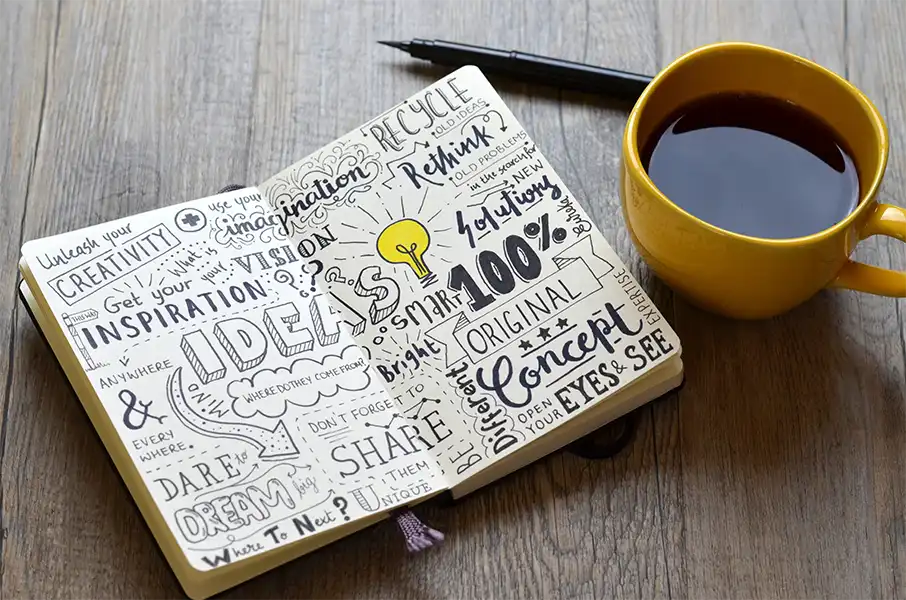
Creativity doesn’t exist in isolation; it thrives on connection. Some of the most profound sparks of inspiration come from experiencing other forms of art—paintings, music, film—that touch the soul and ignite fresh ideas. Whether you’re a writer, painter, musician, or filmmaker, exploring the rich world of artistic expression can lead to surprising breakthroughs and new perspectives.
Here’s how you can harness the power of art to inspire your creativity.
1. Paintings: Stories in Every Brushstroke
Paintings are visual stories frozen in time. Each canvas is a window into emotion, history, or imagination. Here’s how to draw inspiration from paintings:
- Step into the Scene: Pick a painting that captivates you. What’s happening just beyond the frame? What stories are unfolding within the colors and shapes? Imagine the lives of the subjects or the thoughts of the artist.
- Focus on Emotion: Pay attention to the mood conveyed by the colors and composition. Let those emotions guide you to create something reflective—be it a poem, a melody, or a character.
- Experiment with Style: If you’re a visual artist, try mimicking the techniques of a painter you admire. If you’re a writer, describe a painting in words and let that description evolve into a narrative.
Example: Vincent van Gogh’s Starry Night might inspire a story about a dreamer navigating the tension between the chaos of their mind and the serenity of the world around them.
2. Music: Emotions Set to Sound
Music is a universal language that transcends words, tapping directly into our emotions. Whether it’s a haunting melody or a pounding beat, music can open creative floodgates.
- Create a Playlist: Compile music that aligns with the mood or theme you’re exploring. For example, a dramatic film score might inspire a suspenseful scene, while an upbeat track could lead to a joyful creation.
- Visualize the Sound: Close your eyes and let the music guide you. What images or scenes come to mind? Translate these visuals into your art.
- Borrow the Structure: Notice the rise and fall in a song—the verses, the chorus, the bridge. Apply that structure to your storytelling or visual composition.
Example: A classical piece like Beethoven’s Moonlight Sonata might inspire a moody short film or a series of sketches reflecting solitude and introspection.
3. Film: Moving Stories That Spark Ideas
Films combine storytelling, visuals, music, and performance into one powerful medium. Watching movies with a creative lens can fuel your imagination.
- Analyze the Visuals: Pay attention to the cinematography—how lighting, angles, and colors convey emotion. Imagine how those visual techniques could influence your own work.
- Deconstruct the Story: Identify key elements of the plot, like the inciting incident or turning point. How could a similar structure enhance your creative project?
- Explore Themes: Films often explore universal themes like love, loss, or identity. Reflect on how these themes resonate with your life and channel that energy into your art.
Example: A whimsical film like Amélie might inspire you to create a character who finds joy in the smallest details of life or to experiment with a vibrant color palette.
4. Combine Art Forms
The most powerful inspiration often comes from blending different mediums:
- Write a poem inspired by a painting.
- Create a series of illustrations based on a favorite song.
- Develop a screenplay that reimagines a classic work of art in a modern setting.
These interdisciplinary approaches push boundaries and lead to exciting creative discoveries.
5. Seek Out the Unfamiliar
If you usually stick to one type of art, explore something new. Watch foreign films, listen to a genre of music you’ve never tried, or visit an art exhibit outside your usual interests. The unfamiliar stimulates fresh thinking and offers unexpected perspectives.
6. Create an Inspiration Ritual
Make a habit of engaging with art regularly. Spend time in an art gallery, listen to an album from start to finish, or set aside a movie night for films known for their artistic brilliance. These rituals feed your creativity and keep your inspiration flowing.
Final Thoughts
Art has the power to transcend boundaries, spark imagination, and evoke emotions that inspire us to create. By immersing yourself in the beauty of paintings, music, and film, you open yourself to new ideas, deepen your creative process, and connect with the universal language of art.
What inspires you most? Start exploring, experimenting, and letting the creativity flow!
